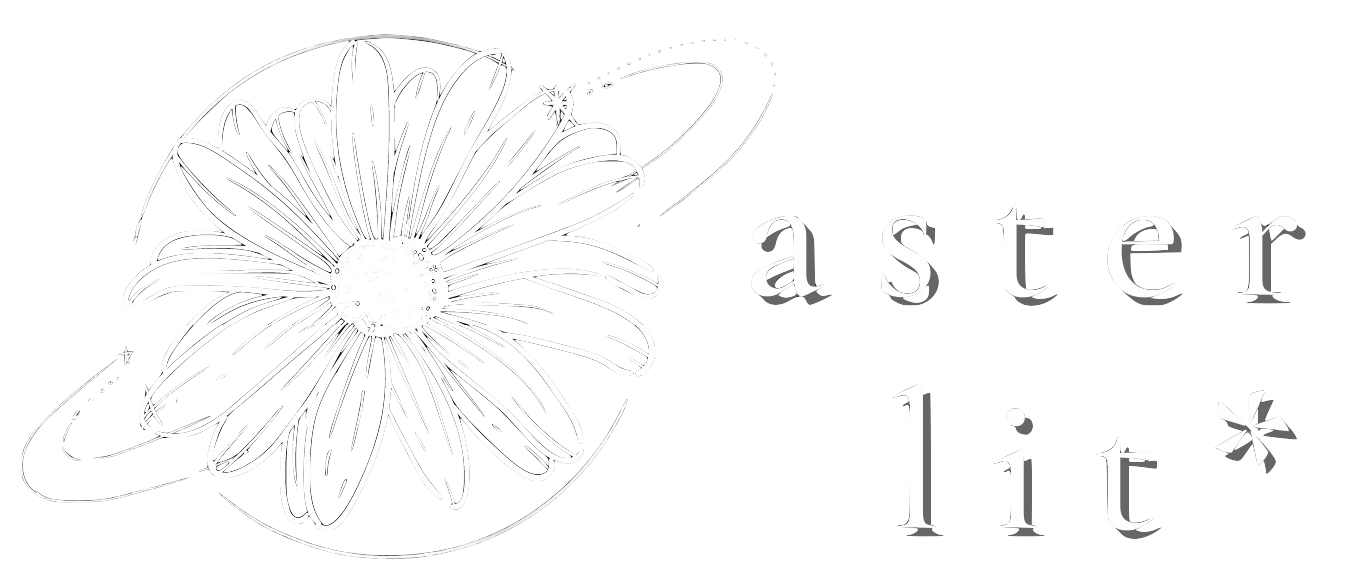
Aster Lit: Reprise
Issue 13—Spring 2025
Starlit Award
Each issue, we hope to recognize submissions outstanding in mastery of craft and originality of voice. This issue, the winner of the Starlit Award will receive a monetary award of $100. We are proud to present the Issue 13 Starlit Award for Poetry to Noralee Zwick (United States) and the Starlit Award for prose to Catherine Xue (United States). The honorable mention recipients are Claire Yang (United States) and Michelle Li (United States).
Scroll down to read the rest of Issue 13.
Noralee Zwick
Starlit Award Winner — Poetry
Catherine Xue
Starlit Award Winner — Prose
Michelle Li
Honorable Mention
Claire Yang
Honorable Mention
reprise
n.
a reimagined continuation (of the most vital components)

Theme Winners
Each issue, we recognize theme winners who we believe demonstrate thoughtful and creative engagement with our theme and sophisticated use of their craft to tell a compelling, unique story. The theme winner for Issue 13 is Roukia Ali (Canada) for prose, and Aldrin Badiola (United States) for poetry.
Read more about the theme here.
Roukia Ali
Aldrin Badiola
Poetry
Themed Poetry
Aldrin Badiola — On Fatherhood
Cailey Tin — after a stressful season, my hands ripen &
Joanne Hwang — Recycled Consciousness
Solly Woo — abecedarian for returning home
Noralee Zwick — poem in which I cannot rely on my hands
Unthemed Poetry
Claire Yang — Red August, 1966 — HOW WE LIVE
Michelle Li — Aloe Vera
Dante de Jong — fading flag
Prose
Themed Prose
Catherine Xue — 漫游 (Roaming)
Roukia Ali — Souvenirs for Strangers
Unthemed Prose
Chloe Anya Yang — Pungency
Michelle Li — Wither on the Vine
Artwork
Antrey Bradley — Don’t Focus on Me — Distant Memories
Izzah Awan — Takbeer

Note from the Editors
“Here’s a comfort in telling yourself something over and over, something that fundamentally stays the same yet has the ability to transmute itself.“—”Souvenirs for Strangers” by Roukia Ali
There’s something so fundamental about repetition, renewal, reinvigoration—from the familiar three-arc structures universal across stories to the biological rhythm of night and day, hunger and satisfaction, aging and reproduction—reprise creates meaning purely from motion: cyclic, reminiscent, resistant, committing to tell this story again and again until it matters. As long as it matters. As long as we live to tell it. Because, as Joan Didion writes, “We tell ourselves stories in order to live.”
Reprise is how we construct meaning—how we give ourselves tomorrow.
According to Noralee Zwick’s “poem in which I cannot rely on my hands,” this process is holy. According to Aldrin Badiola’s “On Fatherhood,” this process is familial. According to Antrey Bradley’s “Don’t Focus on Me” and “Distant Memories,” this process is blurry, mistake-filled, but ultimately a culmination of everything we have ever known.
Reprise “transmutes itself” (“Souvenirs for Strangers” by Roukia Ali): it grows as we grow, it spins and spins like the orbit of the earth we never notice, like the stolen chickens of summer (“How We Live” by Claire Yang), it spins and spins until the piece of paper is folded fifty times and we are two-thirds to the sun. Now thousands of miles from home, gazing at a truncated cosmic wonder with (delivered by Amazon Prime with incredible punctuality) (“漫游 (Roaming)” by Catherine Xue), we are promised another chance to breathe. Another chance to begin.
So rejoice in these reprises, our Asterisks. Rejoice that five years later, we are still writing and reading and loving, from our team to your screen, from your stories to our hearts. Thank you for blessing us with your stories. Thank you for being our reprise.
Follow us on Instagram (@aster.lit) for more literature, artwork, and cross-cultural connections, and we can’t wait to read you next.
We love you. Your voice matters. Keep telling stories.
With all our love,
Emma Zhang (Co-Editor-in-Chief) & the Aster Lit team
